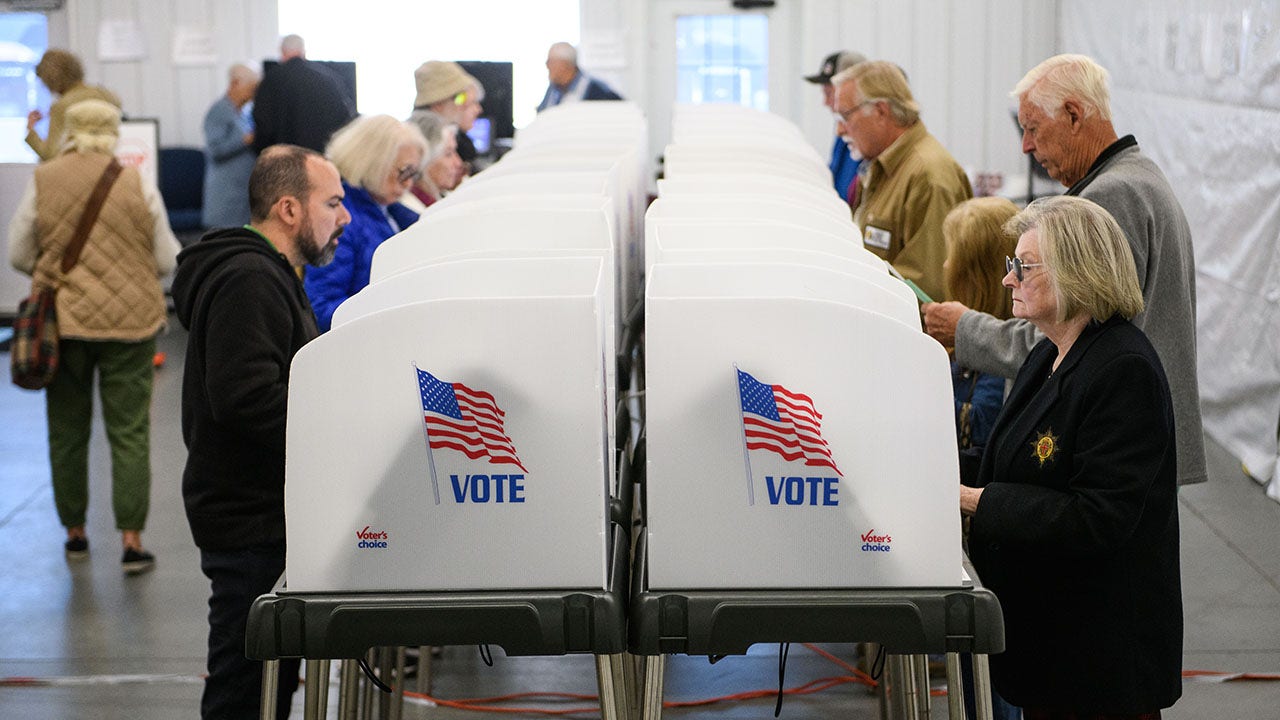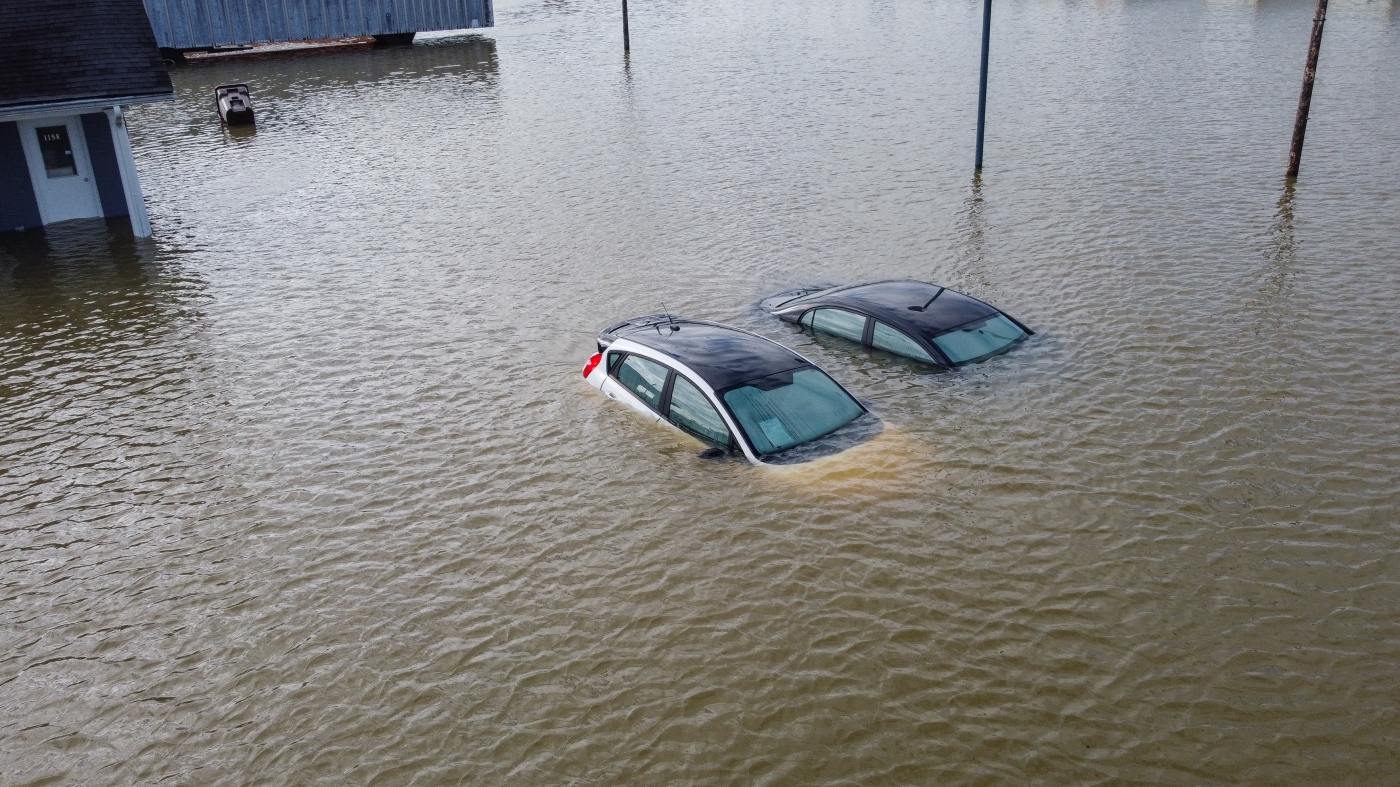Pennsylvania
New Pennsylvania Legislation Aims to Classify ‘Produced Water’ From Fracking as Hazardous Waste – Inside Climate News

Katie Muth knew it would be a long shot. This January, the Pennsylvania state senator reintroduced three pieces of legislation aimed at closing loopholes in the laws governing how the oil and gas industry disposes of its solid and liquid waste.
In Pennsylvania’s Republican-controlled Senate, Muth said any legislation hampering business as usual for oil and gas companies would garner little to no bipartisan support. Still, there is utility in getting “a lot of legislators on the record voting down clean water,” she said.
“The exemptions don’t remove the harm” that waste from the oil and gas industry inflicts on Pennsylvanians, Muth said. “It just saves corporations money where Pennsylvanians have to suffer.”
Residents in Pennsylvania and across the country have expressed concerns about oil and gas waste disposal landfills, holding ponds and storage wells being located in their communities, and researchers and journalists have uncovered instances in which drinking water and freshwater species have been poisoned by produced water.
The third bill, SB29, also in the Environmental Resources and Energy Committee, would go beyond closing loopholes by introducing regulations that require landfills to test the toxicity of residual oil and gas waste and any runoff, or leachate, it creates. Once dumped in landfills, oil and gas waste can mix with rainwater to generate highly toxic leachate that can contaminate the surrounding environment as runoff or run through storm sewers to wastewater treatment plants, where it is disposed of in local waterways. SB29 would also prevent landfills from accepting any waste that is radioactive.
“These are loopholes that allow one specific industry to do business in a dirty, horrible way,” said Muth, speaking over the phone ahead of the new legislative assembly in Pennsylvania, which began Aug. 30.
A representative from Marcellus Shale Coalition, which represents drillers in Pennsylvania, pushed back on the characterization of the industry’s waste-disposal standards as benefiting from a loophole.
“Pennsylvania and the federal government have strict regulations regarding the handling, treatment and disposal of waste that are based on the characteristics, not the industry that generates it,” the coalition’s President, David Callahan, said in a statement. “While we abide by the same regulations as all waste generators, the oil and gas industry has some of the most robust tracking and disposal standards of any Pennsylvania industry, as all waste generated must be sampled, analyzed and approved by environmental regulators, and every individual waste truck undergoes screening prior to landfill disposal.
“Our members are committed to safe, responsible operations and continue to drive waste and water management innovations, including developing water recycling practices more than a decade ago that have become standard procedure today.”
For Gillian Graber, executive director and founder of Protect PT, an organization focused on educating Pennsylvanians living in the state’s southwestern counties on the impacts of fossil fuel drilling, this kind of legislation is desperately needed.
“Produce water is super problematic,” Graber said, referring to the salty, chemical-laced liquid that bubbles back to the surface of a fracked well, because it is highly toxic and difficult to dispose of safely.
During the first week or two after a well is fracked for natural gas in Pennsylvania’s Marcellus shale, water known as flowback is allowed to drain from the well slowly so that sand, used as a “proppant” to hold the rock apart while the methane escapes, doesn’t come up with it. Gas can’t escape while water fills the well.
This flowback contains the initial chemical additives, or fracking fluids, plus chemicals and minerals it absorbed while coursing through the Marcellus. As the well starts producing gas, the water that comes from deep underground is called produced water. Because it has had more time to dissolve elements of the shale and percolate in the Marcellus, it contains a higher concentration of chemicals, along with numerous hazardous compounds, which can include bromide, arsenic, strontium, mercury, barium, radioactive isotopes such as radium 226 and 228, and organic compounds, particularly benzene, toluene, ethylbenzene and xylenes.
Only about 5 to 10 percent of the millions of gallons of water used to frack a well initially comes back to the surface. The Marcellus is a dry formation that absorbs much of the fracking fluid.
The produced water and gas are collected and separated at the drill pad. Liquid is usually stored in onsite tanks until it’s reused or trucked somewhere else.
Just trucking produced water across the state from fracking wells to underground “injection” wells for storage, which are located in Pennsylvania and Ohio, can pose serious hazards, even to Pennsylvanians who don’t live near fracking wells, Graber continued. According to data oil and gas companies reported to Pennsylvania’s Department of Environmental Protection (DEP) the fracking industry generated about 2.6 billion gallons of liquid waste from oil and gas projects in 2022, roughly 44 percent of which was reused for more fracking.
Of the remaining 1.5 billion gallons, only 6 percent was impounded on site and held in large tanks. The overwhelming majority was transferred to an injection well to be pumped deep below ground.
Because natural gas drillers aren’t required by state or federal law to publicly disclose what chemicals they’re using in the fracking process, Graber said that “it is incredibly difficult to know what is being transported on our roads.” The trucks are not required to be labeled as hazardous—an oversight Muth’s bills would correct—even though the produced water they’re carrying often contains radium 226 and 228 and, as a result, truck drivers may not realize they’re hauling “potentially radioactive” materials, said Graber.
Most people, she added, “don’t have any notion of just how bad this problem is.”
Six other Senate Democrats initially joined Muth in co-sponsoring these bills, and Graber said that “it would be great if other people would be as forward thinking as Senator Muth.”
Graber is dismayed that this issue is politicized, but hopes that the polarization is beginning to wane. In July, Rep. Charity Grimm Krupa, a House Republican, announced her intent to introduce legislation that would ban the state from issuing permits for injection wells within Pennsylvania.
But until there’s a robust bipartisan groundswell for legislation that sheds more light on the composition and effects of produced water, Graber said she expects to remain frustrated by an apparent double standard: local governments welcome new fracking wells, but draw the line at disposing the waste that comes from them.
“What I think that they’re neglecting to realize is that the only reason why they’re being targeted as a waste dump is because the waste exists in the first place,” she said. “How can you say you support an industry but not the thing it makes?”
Others who monitor fracking waste in Pennsylvania believe that testing, documenting and regulating what exactly is in produced water is necessary to help hold accountable an industry that’s become far too comfortable maneuvering through legislative loopholes.
Keep Environmental Journalism Alive
ICN provides award-winning climate coverage free of charge and advertising. We rely on donations from readers like you to keep going.
Donate Now
Matt Kelso, the manager of data and technology at FracTracker Alliance who supplied Inside Climate News with data about the amount of toxic wastewater in the state, views produced water as “fundamentally risky,” and a problem that the oil and gas industry is not close to solving. “The water is hard to deal with,” he said. “If you dilute it, then you have more of it. And if you concentrate it there, then you have a higher level of contaminants” on site, he said.
“If they treated it honestly” and were forced to handle waste in the same manner as other regulated entities, he said, “I think it would be really crippling for the industry.”
Asked what impact her bills would have on the oil gas industry in Pennsylvania, Muth agreed with Kelso’s assessment. “It would cost them more money,” said Muth. “That’s why they don’t want to do it.”
If these bills don’t make it to the floor for a vote, Muth is prepared to keep adding amendments to future legislation, in large part to get people on the record. “It shows people that their legislators are voting down the opportunity to protect their constituents from this waste cycle,” she said.

Pennsylvania
Person caught on camera tossing dog over fence at Pennsylvania shelter identified

A person caught on camera tossing a dog several feet over a fence at the Central Pennsylvania Humane Society has been identified.
Logan Township police said 39-year-old Erin D. House of Williamsburg will be charged with animal cruelty and corruption of minors, CBS affiliate WTAJ reports.
At the end of March, the no-kill shelter in Blair County shared a video on Facebook asking for help identifying the person caught on surveillance video tossing the dog over the fence and leaving. The video had over 700,000 views.
The humane society wrote on Facebook that the suspect “TOSSED a senior Pitbull over our fence! Tossed her onto CONCRETE where she rolls down the sidewalk!!! It was probably a 5 feet drop, minimum! She spent the night outside ALONE! No food. No water. Nothing. What if she jumped the fence onto a 55mph road???”
(Photo: Central Pennsylvania Humane Society/Facebook)
Vet staff found the dog, later named Cherry, when they arrived eight hours later. The investigation revealed that Cherry recently had given birth to a puppy, which the humane society took into custody.
The shelter also learned that Cherry, who must have experienced “a pretty significant landing” after she was thrown, dislocated her hip. The injury was “causing intense pain” and she had to have surgery.
Cherry found a foster home where she could recover after her surgery, and after her foster mom fell “madly in love,” she decided to adopt Cherry, the humane society said.
Pennsylvania
Families in Norristown, Pennsylvania, speak out following wave of ICE arrests, deportations

Community members and immigrant rights advocates gathered Wednesday evening at the Reformed Church of the Ascension in Norristown to share emotional stories of loved ones detained — and in some cases deported — amid what they describe as a recent wave of immigration enforcement.
Julieta Guadalupe Adán said her brother, 34-year-old Alejandro Serrano Adán, was detained by U.S. Immigration and Customs Enforcement agents on Saturday and is now back in Mexico.
“He’s never had any incident with the law,” she said through a translator. “He came here. He always had a consistent job. His main focus was to provide for his family.”
According to Guadalupe Adán, her brother came to the United States from Mexico four years ago to work as a landscaper. Though he was undocumented, she said he had no criminal record, but often gave rides to a man who she believed did.
“I’ve warned him of this,” she said. “He was somebody who, if you asked him for a ride or a favor, he would do that for anybody.”
Guadalupe Adán said she always knew deportation was a possibility, but said she’s struggling to accept how it happened.
“He was dropped off without any of his documentation — no passport, no information, no money,” she said.
Denisse Argurto, a community organizer in Montgomery County, said advocates have been tracking the number of local families affected by ICE arrests. They estimate that over 25 people have been arrested and at least five deported from Norristown since late May. CBS News Philadelphia has reached out to an ICE spokesperson for confirmation and is awaiting a response.
David McMahon, a community organizer who works with families impacted by immigration enforcement, said educating people about their rights is essential.
“People need to be informed of their rights — where they are able to actually successfully exercise them,” McMahon said. “Especially in instances where people who are most vulnerable can’t really take some actions directly, we can sort of be a public face and get word out that way.”
Over the past few weeks, volunteers like McMahon have handed out pocket-sized cards listing the legal rights of immigrants if approached by immigration officers. The cards include reminders such as the right to remain silent and the ability to refuse entry unless ICE presents a judicial warrant.
Guadalupe Adán said her family is still reeling from her brother’s sudden deportation — but she hopes speaking out will inspire others.
“We do have value. We do have our dignity,” she said. “And we demand respect — especially for our children.”
Pennsylvania
New Details on 2 Tornadoes Confirmed in Northwestern Pennsylvania During Monday’s Storms

Survey Summary:
The National Weather Service Cleveland office confirmed an EF-
2 tornado in eastern Erie County, Pennsylvania, with maximum
estimated wind speeds of 115 mph and a maximum path width of
150 yards. The tornado touched down just northwest of the
intersection of Plum Road and Page Road, with swirls in the field
and moving northeast toppling a large tree and destroying a barn
near Knoyle Rd. The tornado crossed Knoyle Road and struck a second
barn directly, which contained several vehicles and trailers. The
barn was destroyed, leaving the cars heavily damaged and a
trailer overturned. Debris from the structure was across a
nearby field and into the adjacent woods. Two horses and several
cows were killed as a result of the tornado. A nearby home
sustained moderate damage, including ripped siding from the west
side, broken windows, and a blown-out side door. The tornado
continued northeast across an open field before entering a wooded
area, where it damaged several trees. It then lifted shortly
thereafter.
-

 West6 days ago
West6 days agoBattle over Space Command HQ location heats up as lawmakers press new Air Force secretary
-

 World1 week ago
World1 week agoTwo suspected Ugandan rebels killed in Kampala explosion
-

 Politics1 week ago
Politics1 week agoRed state tops annual Heritage Foundation scorecard for strongest election integrity: 'Hard to cheat'
-

 Technology7 days ago
Technology7 days agoiFixit says the Switch 2 is even harder to repair than the original
-

 News1 week ago
News1 week agoStabilizing 'operations,' the National Weather Service hires again after Trump cuts
-

 Movie Reviews1 week ago
Movie Reviews1 week agoStream It Or Skip It: ‘Sinners’ on VOD, Ryan Coogler's ambitious vampire epic set in the segregated South of the 1930s
-

 World1 week ago
World1 week agoEU-Ukraine trade reset: What comes after tariff-free access expires?
-

 Politics1 week ago
Politics1 week agoHawley clashes with UPenn law professor over judicial injunctions















